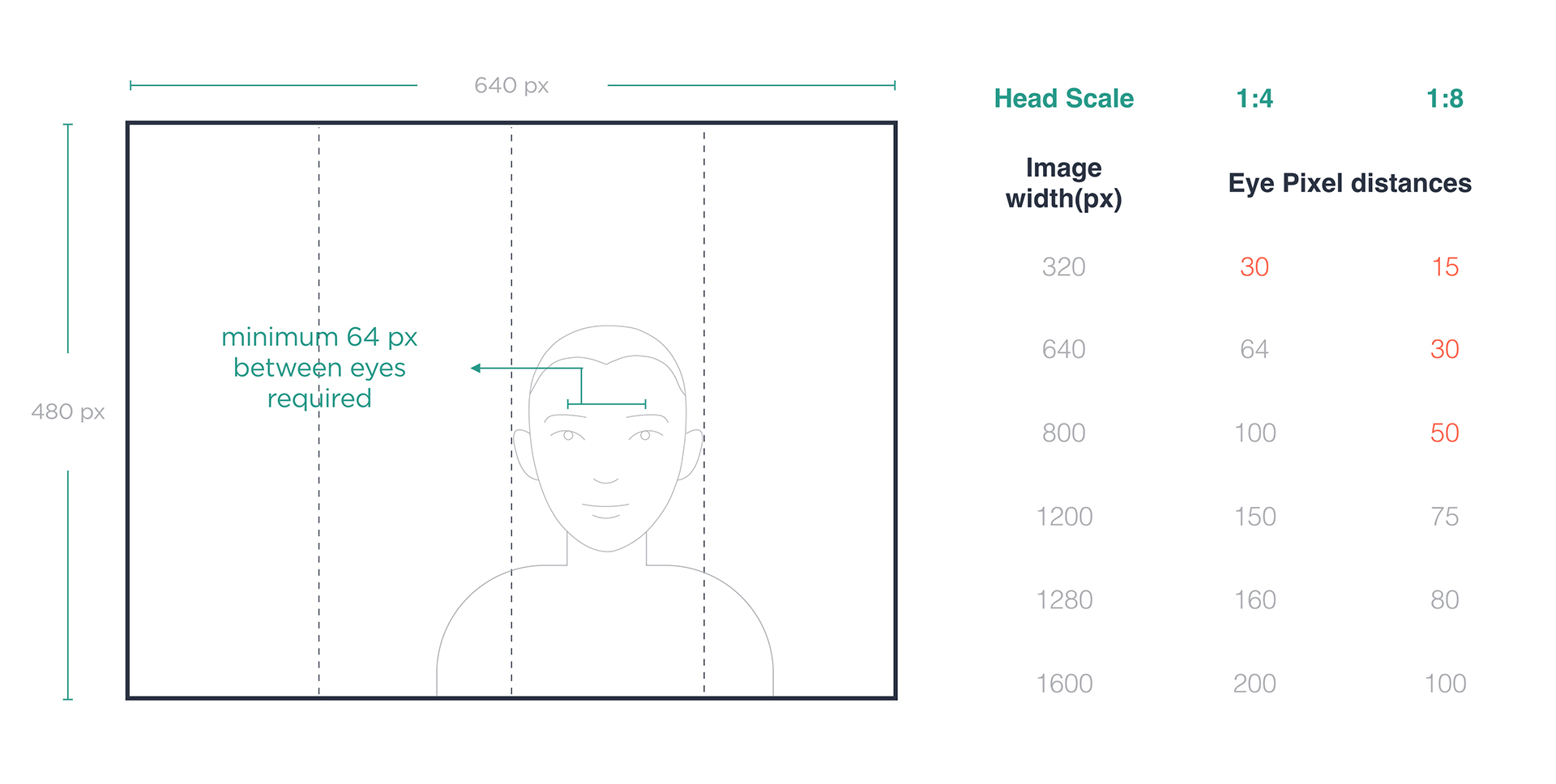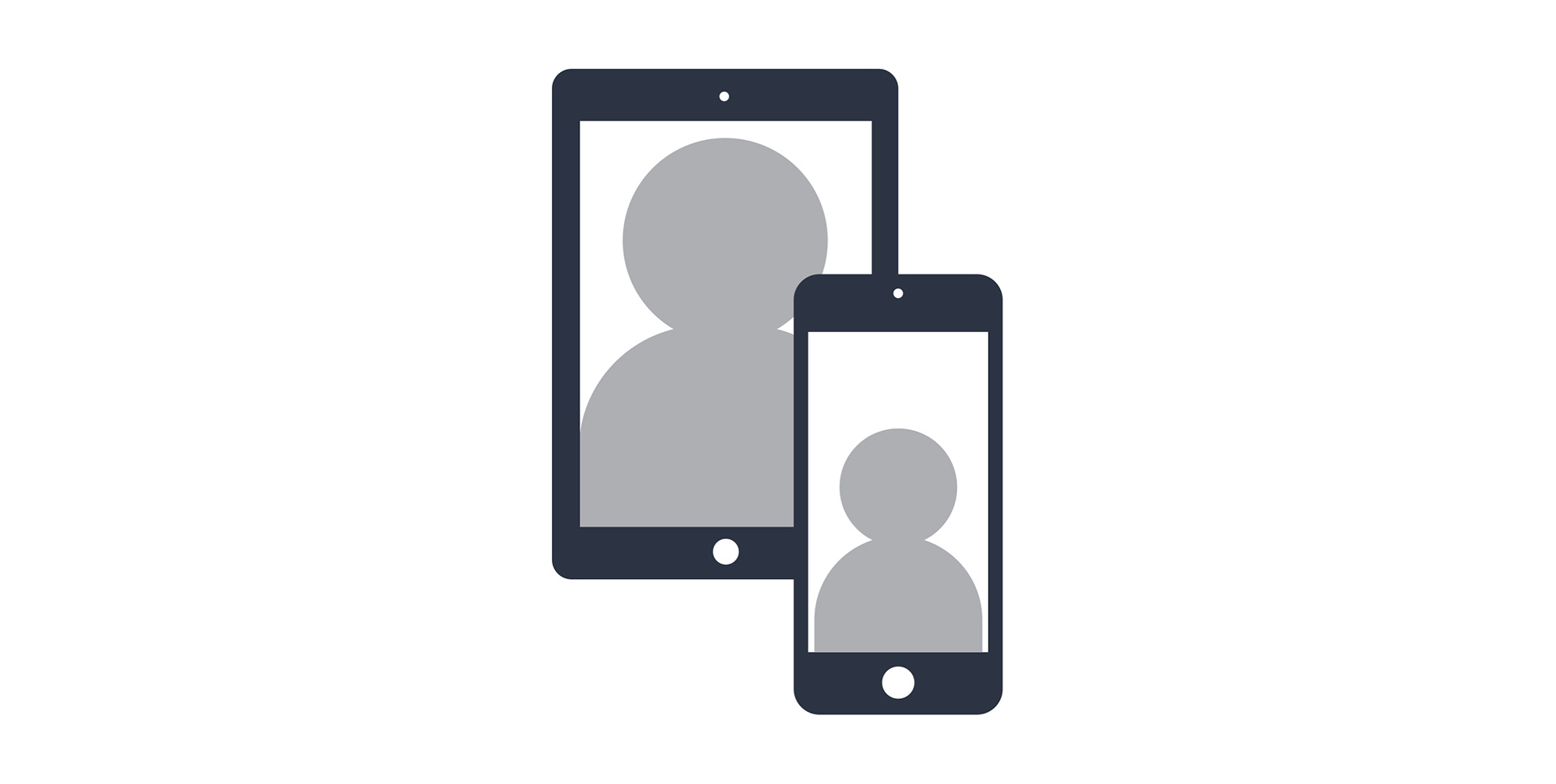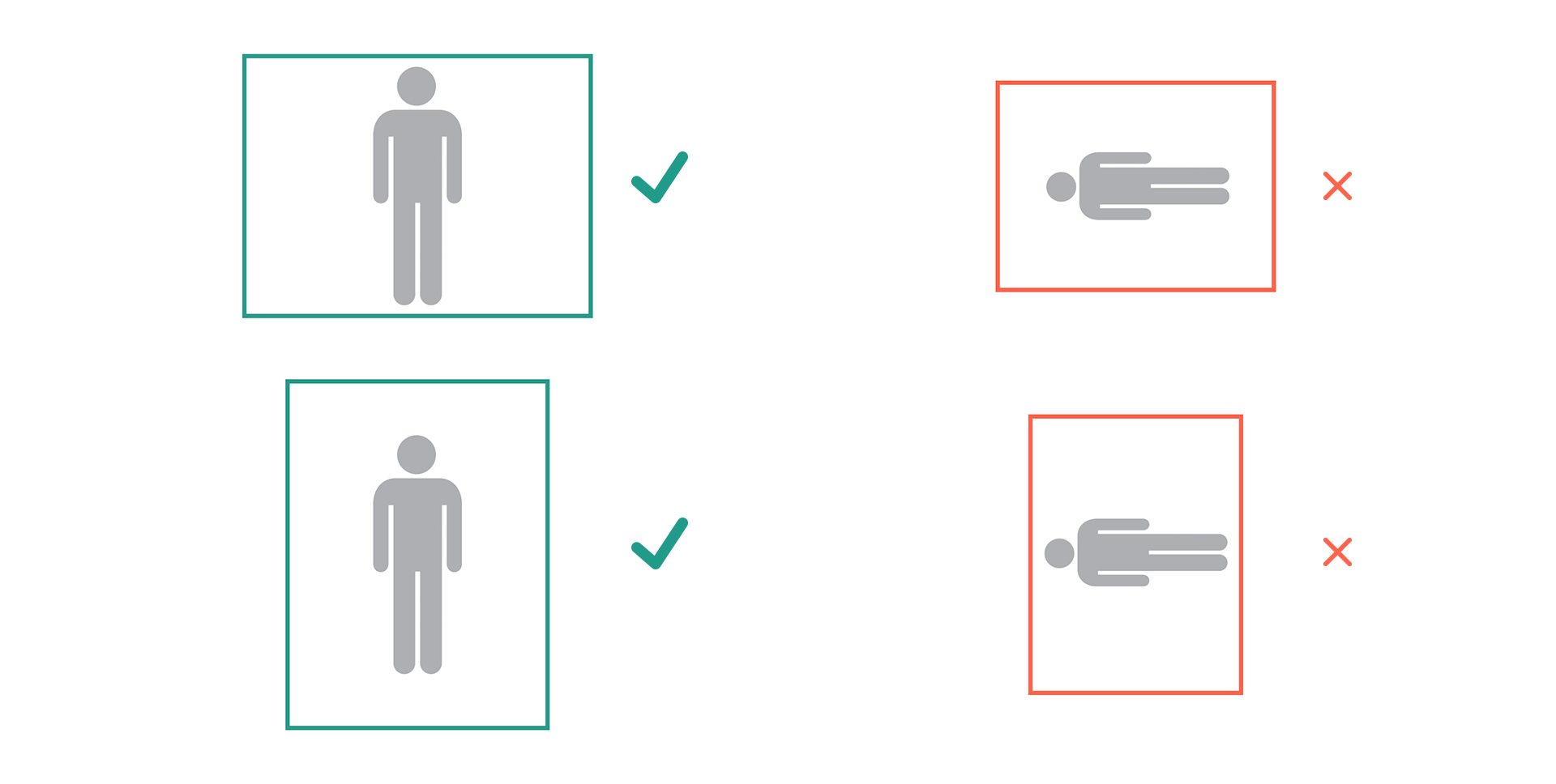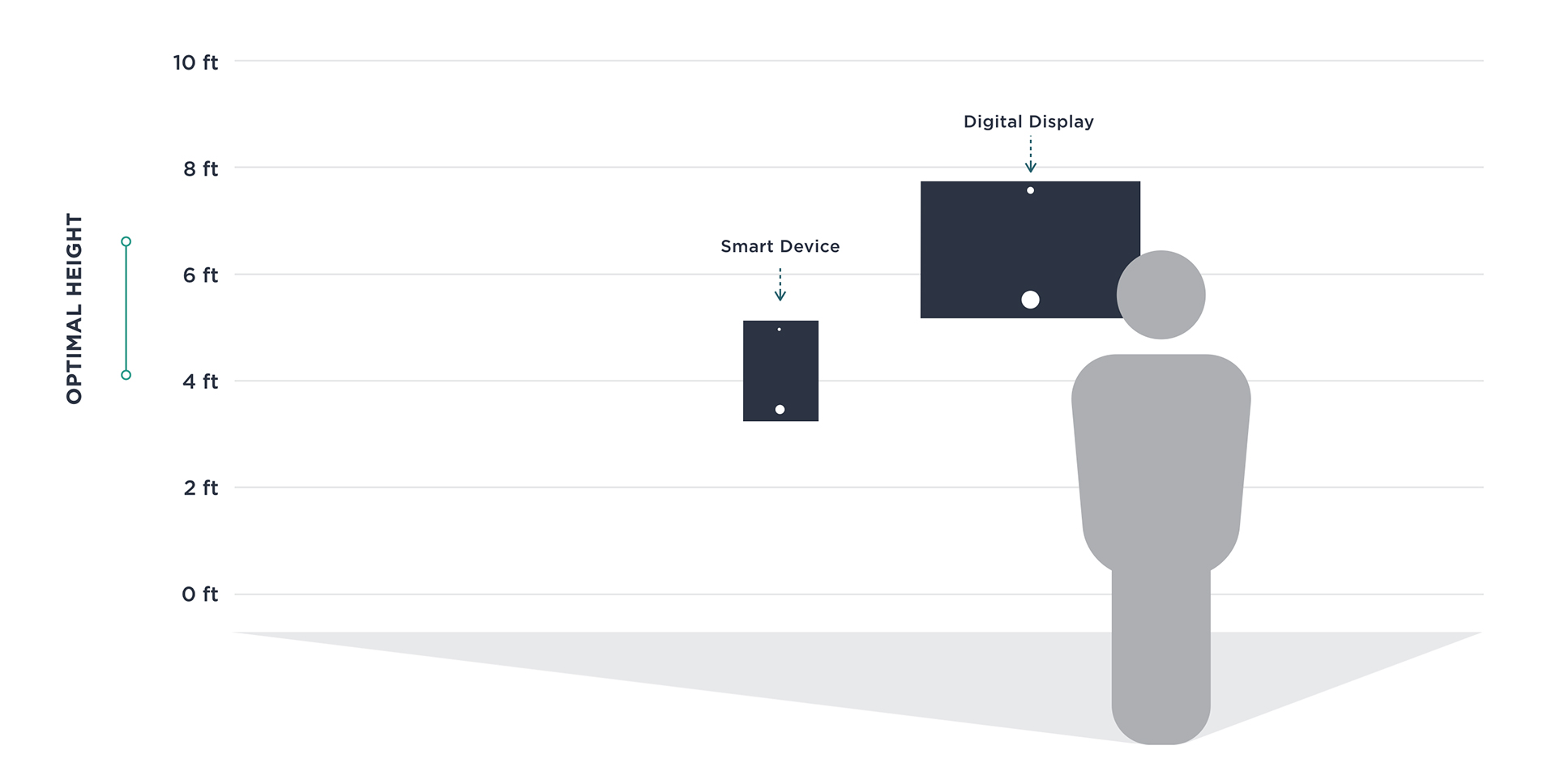Best Practices
We often get questions from our customers on how to make the most out of Kairos’ services. Based on our own experiences of building and developing apps with our technology, we’ve complied a list of practical tips on best practices.
You can refer to these recommendations to improve the quality and accuracy of the data you capture.
Technical Details
Dimension recommendations for optimum results.

Pixel Requirements
There are two factors which affect the usability of an enrolled image: absolute face size in pixels and face size relative to the total size of the image. The above diagram and chart depict the minimum requirements for both.
On average, the pixel width between a person’s eyes is half the distance of their head width. There is no minimum image dimension requirement for using Kairos however, we recommend enrolling photographs or capturing videos where there are at least 64 pixels between a subject's two eyes and the head to image width ratio is no less than 1:8.
Under ideal circumstances, images/videos with at least 160 pixels between the eyes should be used. It is generally not necessary to use images/videos with more than 400 pixels between the eyes, although this would not be detrimental to performance.
Image Capture
Recommendations for positioning, expressions and focus.

Positioning
Face the camera directly and position yourself so that your face fills the frame with 1-2 inch margins on each side. Try to avoid extreme angles and poses.
Expressions
Maintain a neutral expression, remove any dark glasses or tinted lenses, and keep both eyes open.
Lighting
For increased visibility, avoid bright backlighting and glare by taking your photographs under even light.
Focus & Movement
Image focus and blur can have similar effects on performance as low resolution - make sure your captured image is not blurry.
If the camera is having difficulty focusing, you might be too close or too far from the device.
Face Enrollment
Recommendations for uploading reference images or videos.

File Type
Image files can be BMP, JPG, or PNG. We currently do not support GIF.
Video files can be AVI, FLV, MJPEG, MOV, MP4, MPEG, WEBM, or WMV - only accepted for Emotion analysis thru the API.
PRO TIP
We recommend encoding your video with metadata that contains the video length, and using a frame rate between 20-25 fps.
Image Rotation
All images and videos should be rotated such that faces are generally upright without further adjustment.
Confidence
The accuracy of our APIs depend on the quality of the face template used as reference. For the face recognition, this means the quality of enrolled faces. For the emotion and demographic analysis, this means how well the subject’s facial features are captured in the beginning frames of a video.
For example, a video that starts off with the subject close to the camera and ends with the subject being far from the camera will return better results than a video that starts with the subject far from the camera and ends with the subject close to the camera.
For the face recognition, to increase confidence in the system, we recommend enrolling 8-10 different images per user.
Camera Setup
Placement, lighting, and distance recommendations.

Camera Placement
Position camera so people's faces appear vertical in the image. Faces should be closest to the center of the scene. For best results, the camera should be placed in such a way that subjects will be looking directly at the camera. This will allow the measurement to be more accurate in relation to your stimuli (e.g., a digital display with advertising, a smartphone, or a movie screen).
Lighting
Avoid pointing the camera at bright lights, the sun or any area with strong backlighting.
Distance
The maximum distance Kairos could work at depends on the resolution of the camera and the lens used. For example, for accurate results, the captured images/videos should to have at least 64 pixels between a person’s eyes. If you plan to use Kairos for long distances, we recommend that you use a camera with a high megapixel value and/or zoom.
Camera Positioning
Recommendations for mounted displays, kiosks, and devices.

Display
For digital display use cases, the camera should be placed on top or just below the display. Typically, head height (5-6 feet off the ground) is the optimal height placement. The camera should be placed as close to the display’s center in the horizontal direction as possible - this is essential if your displays have stimuli, and you wish to measure people interacting with it. The key here is to avoid extreme angles.
Smart Device
For smart device use cases, the forward facing camera typically appears at the top of the device therefore, optimal height placement is usually a little less than head height (i.e: 5’ 8’’).
If you’re using the APIs for a one-to-one use case such as a kiosk app or an app that uses face recognition for authentication, we recommend a flexible mounting so people can manually adjust height.
On the Go
Recommendations for embedded, forward facing cameras.

Hand-held
Users should hold the device at a comfortable, stable distance from their face. Typically this is within arms length.
Subjects should tilt the device and adjust their head so as to face towards the screen. It’s similar to ‘taking a selfie’. As part of your app design, you could also use onscreen prompts to further guide the person's into an optimal position.